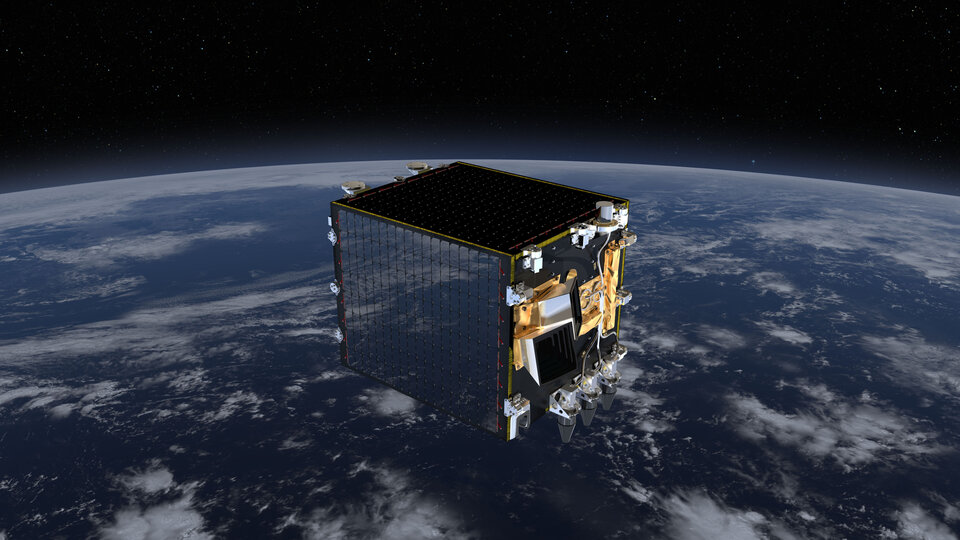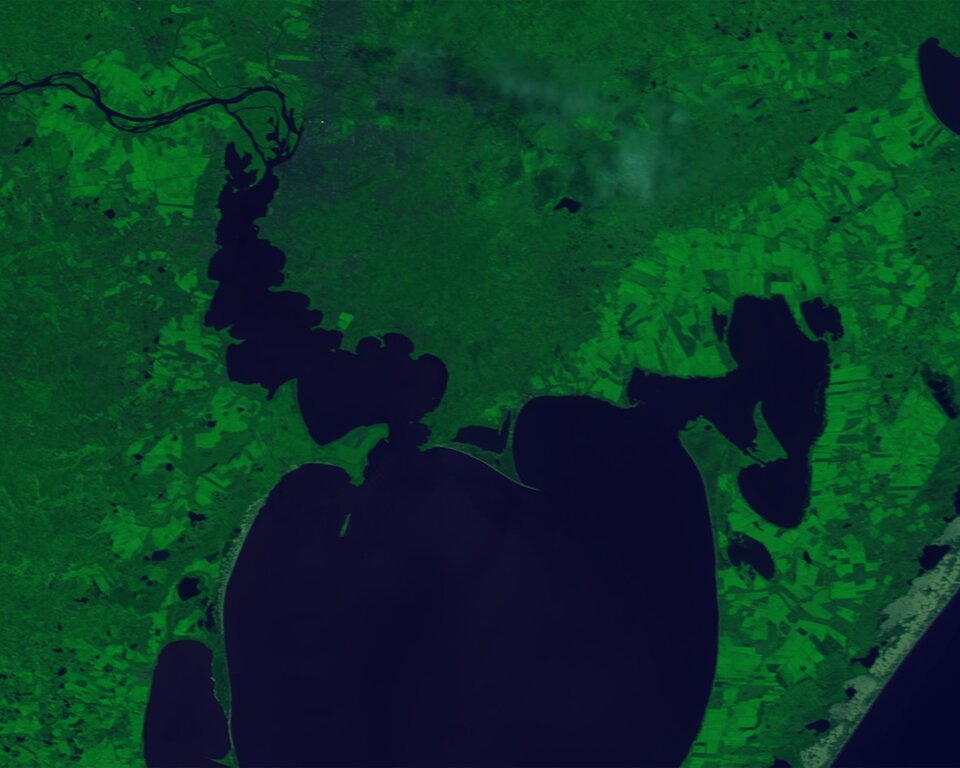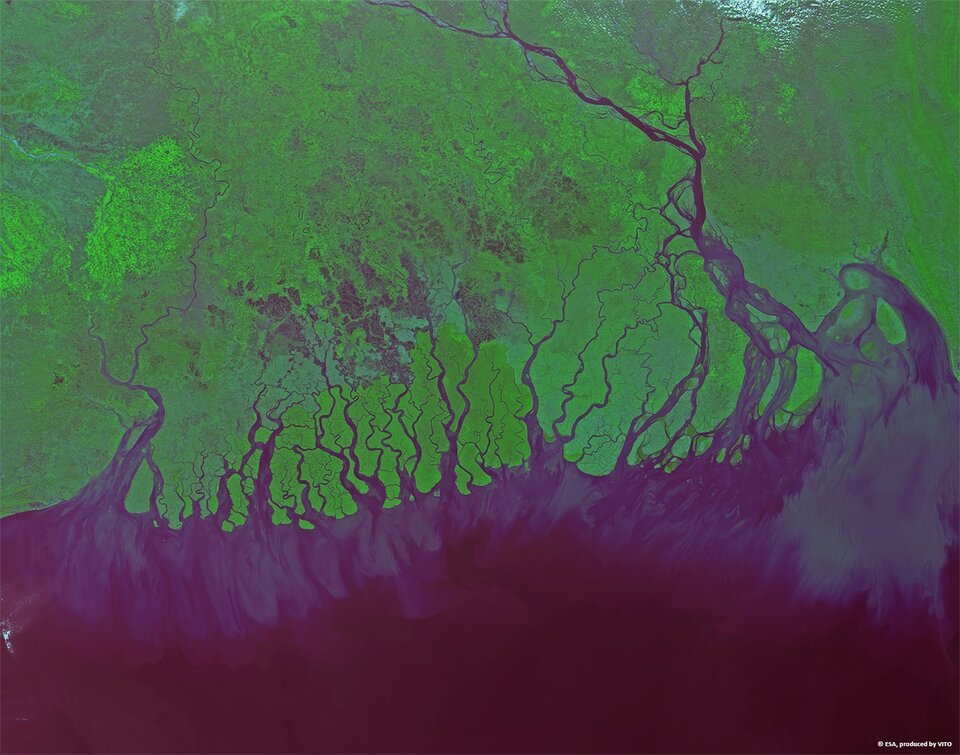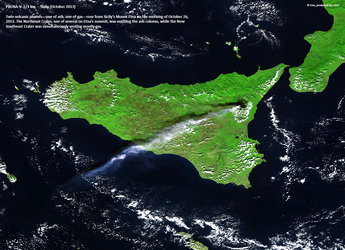Sharp-eyed Proba-V works around the clock
More than 5000 images, 65 daily global maps and six 10-day global syntheses, plus a quick peek at the Olympics: in its first two months of work, the vegetation-monitoring Proba-V minisatellite has yielded a valuable harvest for around a hundred scientific teams around the globe.
Measuring less than a cubic metre, Proba-V tracks vegetation growth across the world on a near-daily basis – 93% of the globe is covered in one day, 100% in two days – using its main wide-viewing Vegetation camera.
Launched last May, the satellite began its routine working life in early December.
Scientists can use the Proba-V output with confidence, knowing they have been cross-calibrated with its predecessor, the Vegetation sensor on France’s Spot-5 satellite.

The new camera improves on Spot’s in one important respect: while the first-generation instrument images the world at 1 km resolution, Proba-V’s vision is much sharper.
It offers daily near-global coverage at 333 m resolution with a geolocation accuracy better than one pixel.
For the central 500 km of Proba-V’s 2250 km field of view the resolution is even sharper – about 100 m in the visible and near-infrared and some 200 m in the shortwave infrared.

In fact, Proba-V’s excellent performance means global products with 100 m resolution are probably possible in the near future. A future 100 m-resolution Proba mission is now being studied.
The output is processed for ESA by Belgium’s Flemish institute for technological research, VITO. “VITO has developed a processing chain for 100 m visible and near infrared syntheses,” explained Bart Deronde, its Proba-V operations manager.
“But before we go on to develop an operational product a thorough analysis needs to be made on the product quality – so we are asking interested research teams to contact VITO if they want to contribute to this effort, planned during the next six months.”
Commercial Vietnamese cousin

Proba-V is set to gain a commercial ‘cousin’ – the minisatellite’s Belgian builders have sold a comparable mission, including satellite and ground station, to Vietnam.
A Belgian consortium led by space software specialist Spacebel has signed a contract with the Vietnam Academy of Science and Technology for a mission called VNREDSat-1B: Vietnam Natural Resources, Environment & Disaster Monitoring satellite.
This hyperspectral Earth observation mission, comparable in design to the Proba-V platform and elements of its payload, will be used for agricultural monitoring, including crop cultivation tracking and water management.

With a 100 km field of view to gather high-resolution hyperspectral and panchromatic imagery from its 640 km-altitude orbit, VNREDSat-1B will revisit any single point on Earth every five days.
Its predecessor was launched on the same Vega rocket as Proba-V, on 7 May 2013.
The contract comprises a total package for building and supply of a complete satellite infrastructure to Vietnam: this includes the satellite, test facilities, ground station and its operation for one year.
Other members of the consortium include Proba-V prime contractor QinetiQ Space, high-technology design company Deltatec, optomechanical manufacturer Amos, the Centre Spatial de Liège research centre and VITO, working on the user segment design.















 Germany
Germany
 Austria
Austria
 Belgium
Belgium
 Denmark
Denmark
 Spain
Spain
 Estonia
Estonia
 Finland
Finland
 France
France
 Greece
Greece
 Hungary
Hungary
 Ireland
Ireland
 Italy
Italy
 Luxembourg
Luxembourg
 Norway
Norway
 The Netherlands
The Netherlands
 Poland
Poland
 Portugal
Portugal
 Czechia
Czechia
 Romania
Romania
 United Kingdom
United Kingdom
 Slovenia
Slovenia
 Sweden
Sweden
 Switzerland
Switzerland



























